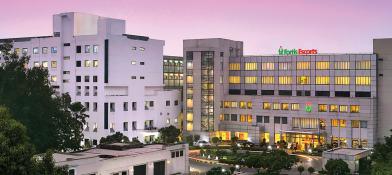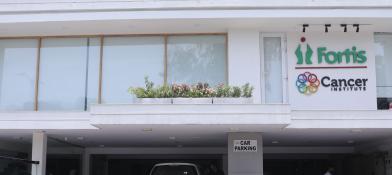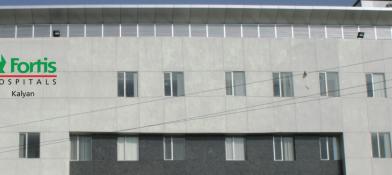Active Surveillance for Prostate Cancer: Purpose, Protocol & Outcomes
Active Surveillance (AS) is a modern, globally recognized strategy for managing men diagnosed with low-risk, localized prostate cancer. It is not a passive approach of doing nothing, but rather a carefully structured and proactive monitoring program. The core principle of active surveillance is to avoid or significantly delay the potential side effects of aggressive treatments like surgery (radical prostatectomy) or radiation therapy, which can include erectile dysfunction and urinary incontinence.
Many prostate cancers are slow-growing (indolent) and may never pose a threat to a man's health or lifespan. For these carefully selected patients, active surveillance offers a way to maintain an excellent quality of life while closely monitoring the cancer for any signs of progression. If the cancer does show signs of becoming more significant, a transition to curative treatment is planned, ensuring the window for a cure is not missed.
What is Active Surveillance?
Active surveillance is a formal management plan that involves regularly scheduled tests to track the status of low-risk prostate cancer. It is an evidence-based alternative to immediate definitive treatment. The goal is to defer or avoid the need for surgery or radiation, thereby preserving urinary, sexual, and bowel function for as long as possible.
The program is built on a foundation of regular monitoring, which typically includes:
- Prostate-Specific Antigen (PSA) Blood Tests: Performed at regular intervals to track the level and rate of change of this key biomarker.
- Digital Rectal Exams (DRE): Physical examinations by a urologist to feel for any changes in the prostate gland's size, shape, or texture.
- Advanced Imaging: Multiparametric Magnetic Resonance Imaging (mp-MRI) of the prostate is often used to get detailed pictures of the tumor and look for any changes in its size or characteristics.
- Repeat Prostate Biopsies: Scheduled surveillance biopsies are performed to re-sample the prostate tissue and confirm that the cancer has not become more aggressive (i.e., the Gleason score has not increased).
A key component of active surveillance is the existence of pre-defined triggers for intervention. If any of the monitoring tests reveal that the cancer is growing or becoming more aggressive, your uro-oncologist will recommend transitioning from surveillance to active treatment with curative intent.
It is crucial to distinguish Active Surveillance from Watchful Waiting. Watchful Waiting is a less intensive strategy, typically for older men or those with significant health problems and a limited life expectancy, where the goal is palliative care rather than cure if the cancer progresses. Active Surveillance, in contrast, is for healthy men with a long life expectancy, and the goal is always to preserve the option for a cure if it becomes necessary.
When is Active Surveillance Recommended? (Patient Candidacy)
The decision to choose active surveillance is a highly personalized one, made through a shared decision-making process between you and your multidisciplinary care team. It is only appropriate for men whose cancer is confirmed to be low-risk and confined to the prostate gland. The strict criteria for candidacy include:
- Gleason Score: A Gleason score of 6 (Grade Group 1) is the most important criterion. This score, determined by a pathologist from your biopsy tissue, indicates a well-differentiated, slow-growing cancer that is very unlikely to spread in the short to medium term.
- Prostate-Specific Antigen (PSA) Level: Typically, the PSA level should be less than 10 ng/mL.
- Clinical Stage: The cancer should be at an early stage (T1c or T2a), meaning it is confined within the prostate and is either not palpable on a DRE or is small and involves less than half of one side of the prostate.
- Tumor Volume on Biopsy: The amount of cancer found in the biopsy cores should be low. For example, cancer may be present in only one or two biopsy cores, with a low percentage of cancer in each of those cores.
In addition to these clinical parameters, your overall health, age, life expectancy, and personal values regarding treatment side effects versus the anxiety of living with an untreated cancer are all taken into account.
Understanding the Underlying Condition: Prostate Cancer
What is Prostate Cancer?
Prostate cancer is a malignant growth that begins in the prostate gland, a small, walnut-sized gland in men that produces the seminal fluid that nourishes and transports sperm. It is one of the most common cancers diagnosed in men worldwide.
The Spectrum of Prostate Cancer: Indolent vs. Aggressive Disease
A critical concept in modern prostate cancer care is understanding that not all prostate cancers are the same. They exist on a wide spectrum of aggressiveness.
- Indolent (Slow-Growing) Cancer: A significant proportion of prostate cancers, particularly those with a Gleason score of 6, are very slow-growing. These tumors may grow so slowly that they would never cause any symptoms or shorten a man's life. This is the group of cancers for which active surveillance is designed, to avoid the overtreatment of a disease that may not be a threat.
- Aggressive Cancer: On the other end of the spectrum are high-risk cancers (e.g., Gleason scores of 8-10) that grow quickly and have a high potential to spread (metastasize) to other parts of the body, such as the lymph nodes and bones. These cancers require immediate and aggressive treatment.
Symptoms of Prostate Cancer
Early-stage prostate cancer, the type eligible for active surveillance, typically causes no symptoms at all. This is why screening with PSA tests is important for early detection. If the cancer grows larger or advances, it can cause symptoms such as:
- Trouble urinating or a weak urinary stream
- Frequent urination, especially at night
- Blood in the urine or semen
- Erectile dysfunction
- In advanced cases, pain in the bones, back, or hips
Risk Factors & When to Discuss Screening
Key risk factors for developing prostate cancer include:
- Increasing Age: The risk rises significantly after the age of 50.
- Family History: Having a father or brother with prostate cancer more than doubles a man's risk.
- Genetics: Inherited mutations in genes like BRCA1 and BRCA2 are associated with an increased risk.
- Ethnicity: Men of African descent have a higher risk of developing and dying from prostate cancer.
Men should begin discussing the pros and cons of prostate cancer screening with their doctor around age 50, or as early as age 45 if they have a strong family history or are otherwise at high risk.
Our Specialists
The management of low-risk prostate cancer through active surveillance requires a dedicated, multidisciplinary team of experts in urology, uro-oncology, pathology, and radiology.
Dr. Anil Mandhani
CHAIRMAN-UROLOGY | Fortis Gurgaon
Dr. Mohan Keshavamurthy
PRINCIPAL DIRECTOR UROLOGY | Fortis BG Road
Dr. Rajinder Yadav
PRINCIPAL DIRECTOR UROLOGY | Fortis Shalimar Bagh
Dr. Shubham Jain
SENIOR DIRECTOR SURGICAL ONCOLOGY | Fortis Vasant Kunj
Patient Stories
“Hearing the word ‘cancer’ was terrifying. My first instinct was to have it removed immediately. But my urologist at Fortis took the time to explain the low-risk nature of my diagnosis and what active surveillance truly meant. It wasn’t ignoring the problem; it was watching it intelligently. It's been three years now. My PSA is stable, and my quality of life is completely normal. I haven't had to deal with any of the side effects I feared. I feel empowered and in control of my health”. — M. Kapoor, 62, Gurugram
“I was on active surveillance for nearly five years. It allowed me to continue my active career and family life without the disruption of a major surgery. Last year, my repeat biopsy showed a slight change, and my team and I decided it was the right time to proceed with a robotic prostatectomy. Because we had been monitoring it so closely, the cancer was still completely contained. Active surveillance gave me five extra years of perfect health and allowed me to have the surgery at a time of my choosing”. — S. Reddy, 58, Bengaluru
The Active Surveillance Protocol: What to Expect
If you and your doctor decide on active surveillance, you will begin a structured monitoring program. While protocols can be personalized, a typical schedule includes:
The Monitoring Schedule:
- PSA Blood Test: Every three to six months. Your doctor will track not just the absolute number but also the trend and the PSA doubling time.
- Digital Rectal Exam (DRE): Every six to twelve months during your clinic visits.
- Prostate MRI: A multiparametric MRI is often performed at the beginning of surveillance to provide a detailed baseline map of the tumor. It may be repeated every one to three years to check for any changes.
- Surveillance Biopsy: A repeat prostate biopsy is typically recommended within 12-18 months of the initial diagnosis to confirm the cancer is still low-risk. Subsequent biopsies are then performed periodically, perhaps every two to five years, depending on the other test results.
Triggers for Re-evaluation and Potential Treatment:
The goal is to intervene only if the cancer shows signs of progressing. Triggers for recommending a switch to active treatment (like surgery or radiation) include:
- Gleason Score Progression: A repeat biopsy showing an increase in the Gleason score to 7 or higher.
- Increase in Tumor Volume: A subsequent biopsy finding a significantly greater number of cores with cancer or a larger percentage of cancer within the cores.
- Changes on MRI: A new or growing lesion on a surveillance MRI that suggests the cancer is becoming more significant.
- Rapid PSA Rise: A consistently and rapidly rising PSA level.
- Patient Preference: A patient can always opt to switch to active treatment at any time.
After the Diagnosis: Living on Active Surveillance
Living with an untreated cancer can be an emotional journey, but there are proactive steps you can take.
- Lifestyle and Diet: While no diet can cure cancer, evidence suggests that a heart-healthy lifestyle is beneficial for prostate health. This includes a diet rich in fruits, vegetables, and healthy fats (like those in olive oil and fish), maintaining a healthy weight, and engaging in regular physical exercise.
- Managing Anxiety: It is normal to feel some anxiety. The key to managing this is confidence in your expert medical team and a clear understanding of your monitoring schedule. Knowing that you are being watched closely by experts provides significant peace of mind.
- Adherence to Schedule: The success of active surveillance depends on your commitment to the follow-up schedule. It is essential to attend all appointments and complete all recommended tests on time.
Risks & Benefits of Active Surveillance
Benefits:
- Avoiding Treatment Side Effects: This is the primary benefit. You avoid or significantly delay the risks of urinary incontinence, erectile dysfunction, and bowel problems associated with surgery and radiation.
- Maintaining High Quality of Life: You can continue all normal life activities without the disruption and recovery period of a major treatment.
- Preventing Overtreatment: You avoid undergoing aggressive treatment for a cancer that may never have caused you any harm.
Risks:
- Risk of Cancer Progression: There is a small risk that the cancer could grow or become more aggressive while on surveillance. Large-scale studies show that the risk of the cancer spreading outside the prostate (metastasis) while on a well-managed AS protocol is very low (less than 1%).
- Anxiety and Stress: Living with an untreated cancer can be psychologically challenging for some men and their families.
- Need for Repeat Biopsies: Surveillance requires periodic biopsies, which can cause temporary discomfort, bleeding, and a small risk of infection.
Myths vs Facts
Take the Next Step
A diagnosis of low-risk prostate cancer presents you with a choice. For the right candidate, active surveillance is a safe, effective, and life-enhancing way to manage the disease. It empowers you to take control of your health by avoiding unnecessary treatment while keeping a watchful eye on the future. Our multidisciplinary team of uro-oncology experts is here to provide a thorough second opinion, confirm your eligibility, and partner with you in making the best decision for your health and quality of life.
Book a Uro-Oncology Consultation
Frequently Asked Questions
1. What is the main difference between Active Surveillance and Watchful Waiting?
Ans. Active Surveillance is for younger, healthier men with low-risk cancer and has a curative intent; if the cancer progresses, the goal is to treat it and cure it. Watchful Waiting is for older men or those with serious health issues, where the goal is to manage symptoms, not necessarily to cure the cancer.
2. How long can a man stay on active surveillance?
Ans. Many men can stay on active surveillance indefinitely. Studies have followed men for over 15 years who have remained safely on surveillance without their cancer progressing to a point that requires treatment.
3. What happens if my PSA level goes up?
Ans. A single rise in PSA is not usually a trigger for treatment, as PSA can fluctuate for many reasons. Your doctor will look at the long-term trend and the rate of change (PSA velocity). A consistent and rapid rise would prompt further investigation, such as an MRI or a repeat biopsy.
4. Is a repeat prostate biopsy painful?
Ans. A prostate biopsy is performed as an outpatient procedure with local anesthesia to numb the area, minimizing discomfort. You may experience some soreness and see a small amount of blood in your urine, stool, or semen for a few days afterward.
5. Can I get a second opinion on my biopsy slides?
Ans. Yes, it is standard and highly recommended practice to have your biopsy slides reviewed by a specialist pathologist (a genitourinary pathologist) to confirm the Gleason score and other details before starting active surveillance.
6. Does diet or exercise really make a difference while on AS?
Ans. While no lifestyle change is a substitute for medical monitoring, a healthy diet, regular exercise, and maintaining a healthy weight are associated with better overall health and may contribute to a healthier prostate environment.
7. What are the chances my cancer will progress and I will need treatment?
Ans. Over 10 years, approximately 50-60% of men who start on active surveillance will remain on it without needing treatment. About 40-50% may eventually transition to active treatment due to signs of progression or personal choice.
8. Is active surveillance covered by health insurance?
Ans. Yes, active surveillance is a standard-of-care medical protocol and is covered by most major health insurance plans. The coverage would include the regular clinic visits, PSA tests, MRIs, and surveillance biopsies as prescribed by your doctor.

































